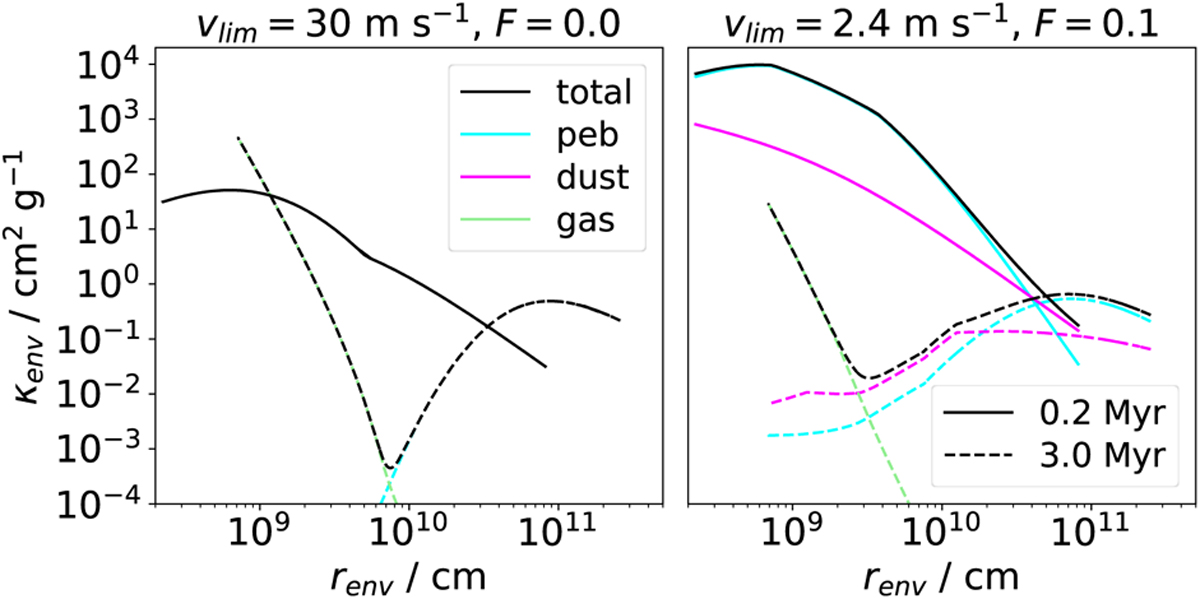Fig. C.1

Download original image
Brouwers opacity as a function of the distance from the center of the planetary core at an early and a late stage in the growth of the planet. Left panel: Estimate of the lower limit of the envelope opacity (vlim = 30.0 m s−1, F = 0.0). Right panel: Envelope opacity that occurs when the default values of Brouwers et al. (2021) are used (vlim = 2.4 m s−1, F = 0.1). The contributions of the gas, the dust, and the pebbles to the total opacities are featured as well. The migration of the planet is suppressed, the growth of the planet initiates at t0 = 0.1 Myr, and the disk lifetime is 3 Myr. The incoming pebble flux is fixed to 0.6 M⊕ Myr−1, but can still be lowered by volatile recycling in the planetary envelope. Apart from that, we use our standard parameters (see Table A.2). After 0.2 Myr (3.0 Myr), the planets have a mass of about 0.05 M⊕ (1.5 M⊕).
Current usage metrics show cumulative count of Article Views (full-text article views including HTML views, PDF and ePub downloads, according to the available data) and Abstracts Views on Vision4Press platform.
Data correspond to usage on the plateform after 2015. The current usage metrics is available 48-96 hours after online publication and is updated daily on week days.
Initial download of the metrics may take a while.


